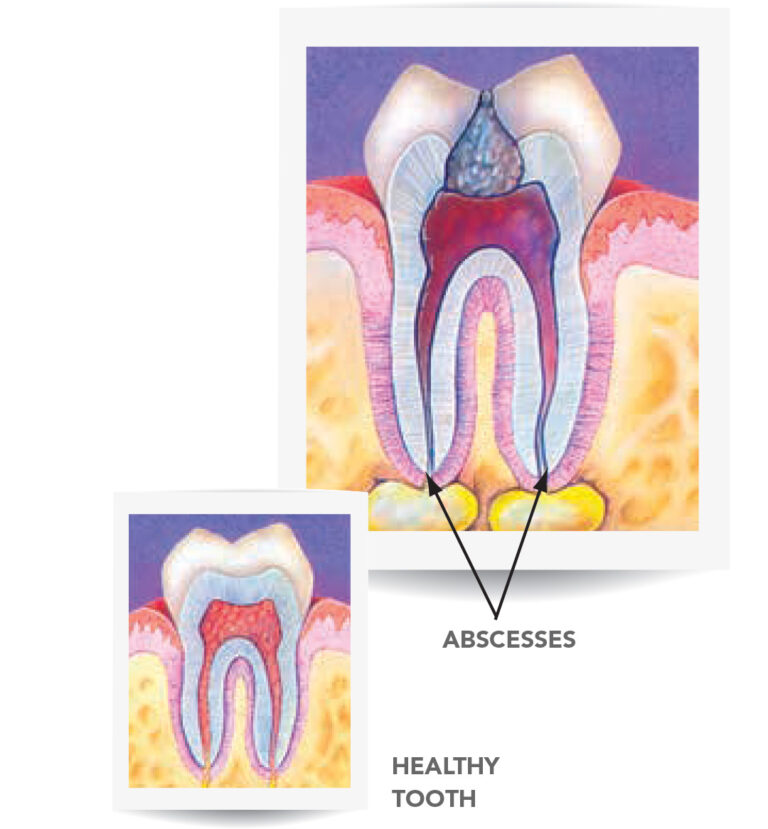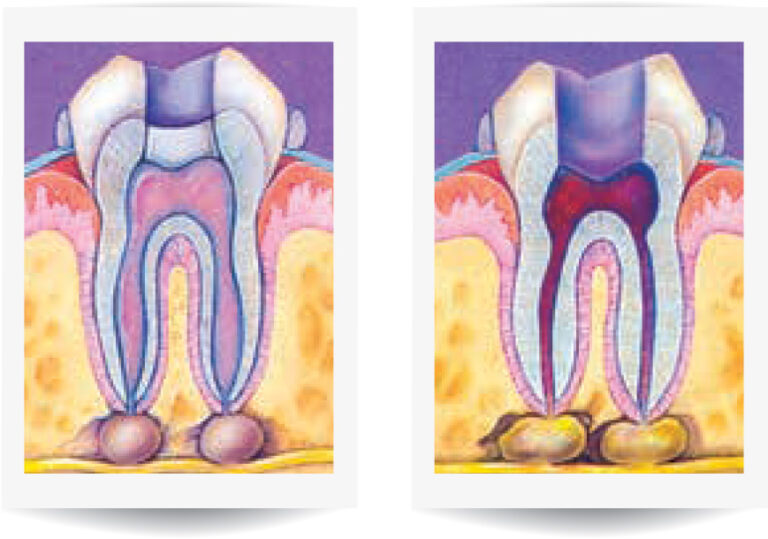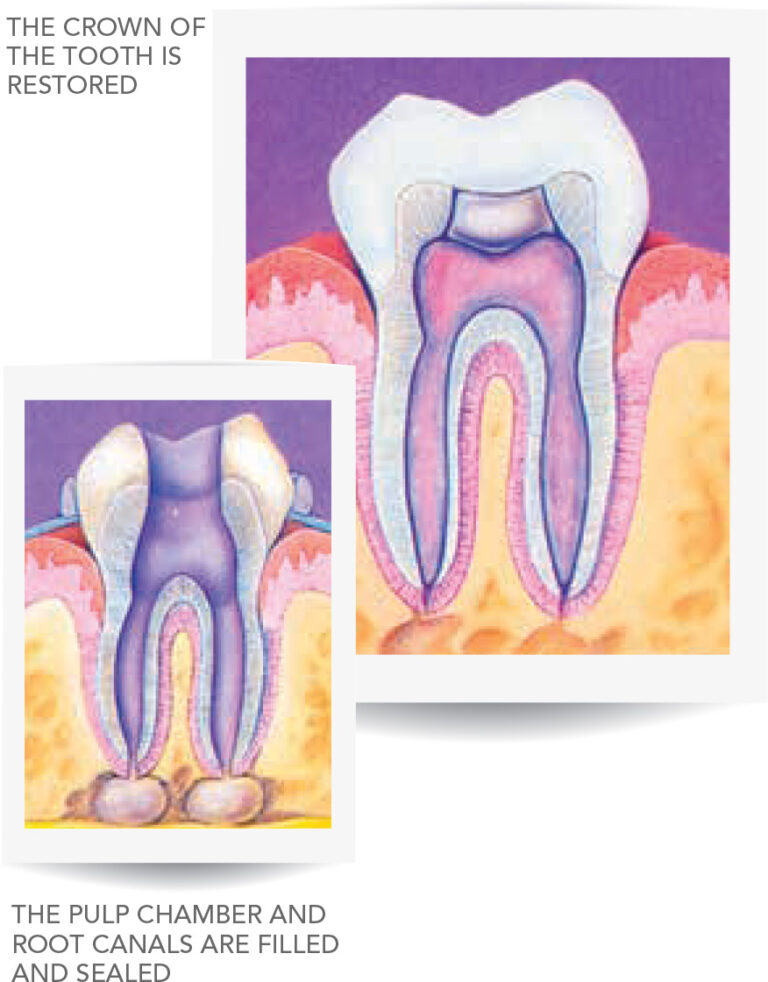Care Following Treatment
Once the root canal treatment has been completed, you should be aware of the following considerations:
DISCOLOURATION
Occasionally an endodontically treated tooth may undergo a change in colour. While this is of no great medical concern, you may be interested in having the tooth bleached. Be sure to ask us about our tooth whitening programs.
BRITTLENESS
A non-vital (endodontically treated) tooth is more brittle than a vital one, and is more susceptible to fracture. Therefore, we recommend that your root canal tooth be crowned (capped) following treatment.
Your Patient Guide
Root Canals
What Makes A Root Canal Necessary?
There are several reasons why you may needa root canal. Some of the more common are:
- Physical irritation caused by deep decay or a very large filling
- Severe gum disease
- Trauma, such as a physical blow to a tooth or a constant striking of a tooth against the opposite jaw
Tooth Requiring Root Canal Therapy

Regardless of the initial cause, the tooth pulp becomes irritated and an abscess (infection) occurs. Bacteria from your saliva grow within the tooth pulp, causing pressure and pain. Eventually the pulp dies, causing the bone around the tooth to be destroyed.
What's Going To Happen?
Once it has been determined (with X-Rays and/or clinical examination) that root canal treatment is necessary, you will be scheduled for one or more appointments. It is key that these appointments are kept – to prevent delays in treatment and healing. It is also essential that you take all antibiotics and medications prescribed. Should you experience pain that cannot be controlled with the prescription medications, CALL OUR OFFICE IMMEDIATELY – this is unusual, but a precaution.
How Your Tooth Can Be Saved?
An opening is made through the crown into the pulp. (Your tooth may be numbed prior to this procedure) The diseased pulp is then carefully removed.

1. An opening is made through the crown into the pulp chamber
2. The pulp is removed and root canals are cleaned, enlarged and shaped
The root canal area inside your tooth in cleaned, enlarged and shaped. Then, depending on your individual case, the root canal(s) and pulp chamber may be permanently filled and sealed. In some cases, a temporary medication is placed in the tooth to control bacterial growth and reduce infection. Most often, a provisional filling is placed in the opening of the tooth until the next visit. In some cases, the tooth may be left open. This allows the infection to drain.
At the next appointment, the inside of the tooth is sterilized to remove any remaining bacteria. Throughout the root canal procedure we take X-Rays to ensure that all of the infected pulp is removed and that the walls inside the canal are smooth. Only then are the root canal and pulp chamber permanently sealed.
Finally, the tooth is fully restored to chewing functions, most often with a full crown.

Further Questions?
Throughout your root canal treatment, you may have many questions or concerns not covered in this document.
We will make every effort to ensure your comfort during your root canal treatment – and we are more than pleased to answer any questions that you may have.
Our concern is your comfort and confidence. Our goal is to help preserve your natural smile and teeth for a lifetime.
What Our Patients Say?
We accept all major insurance plans.
We accept a number of insurance plans to help cover the cost depending on your individual needs.
